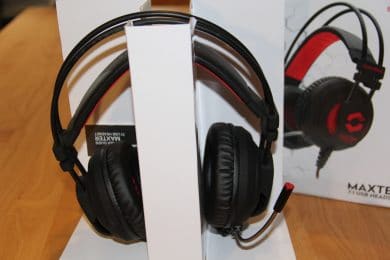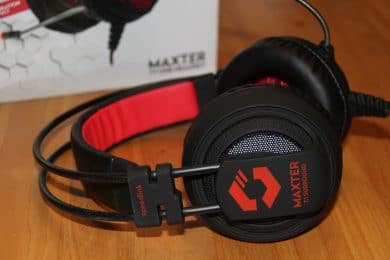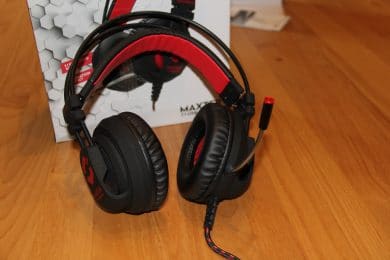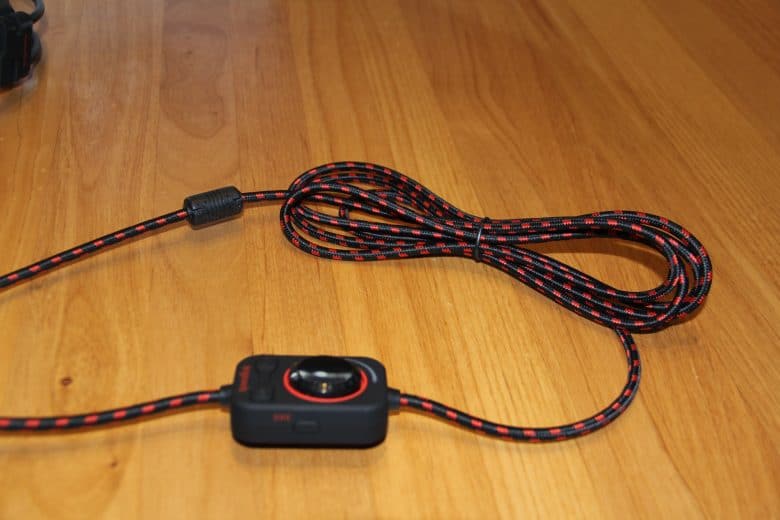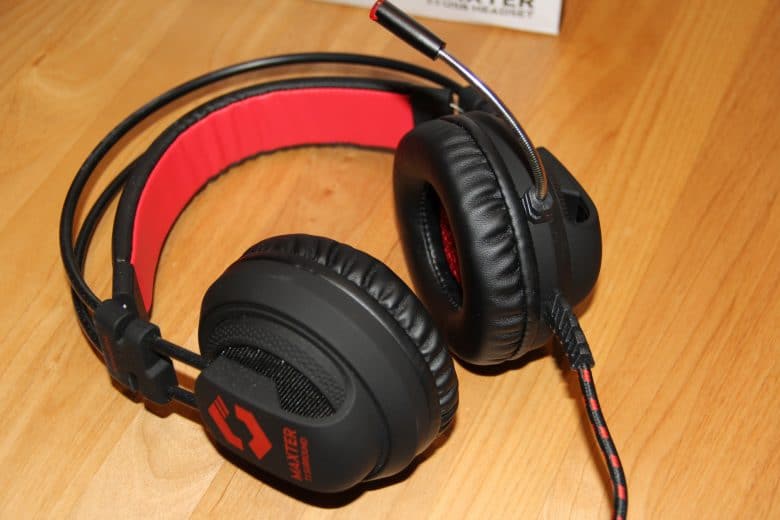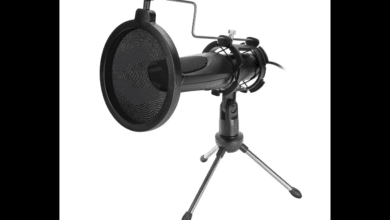
We take a close look at the Speedlink MAXTER 7.1 Surround Gaming Headset, which is currently available for € 49.99 *, and see what innovations it has in store. The product is still largely unknown. With our usual neutral and critical eye, we check whether it is a secret tip or not worth the money.
About the Brand
Speedlink was founded in 1998 as we know it today, before it served other areas. Since then, the German company has concentrated primarily on the electronics industry, and a little later looks at the gaming sector.
In addition to headsets, the company also offers many other gaming devices. To be more precise, there is hardly anything from the PC to the console that the product range of the hardware forge does not offer gamers. There is a large selection and the company has a wide repertoire. But similar to restaurants with too large a menu, there is a danger that all sectors will be covered only superficially. In order to prevail against global competition today, you have to specialize – you need products with innovations.
Technical Details
- 7.1 Surround Gaming Headset for PC
- Cushioned, circumaural ear cups
- Multicoloured illuminated earcups
- Vibration units
- Connection: USB-A
- Driver units: 50mm
- Headphone Frequency Response: 20Hz – 20kHz
- Headphone impedance: 32Ω
- Sound pressure level: 110dB ± 3dB at 1kHz
- Power: 20mW max.
- Microphone frequency response: 100Hz-10kHz
- Sensitivity: -38dB ± 3dB at 1kHz
- Microphone impedance: 2,2kΩ
- directional characteristic: omnidirectional
- Cable length: 3m
- Dimensions: 215 × 210 × 105mm (W × D × H)
- Weight: 485g (incl. cable)
First Impression & Quality
The PC headset makes a good first impression when unpacked. The workmanship is solid, it is carefully designed and visually appealing. The packaging is simple and clear. The over-ear earcups and headband are robust. The cable is thickly sheathed and thanks to good cable suspension lets gaming sessions be hoped for for several years. This is especially good for headsets, with which you always get stuck somewhere or throw them off the table. The test product also passes the bending test with flying colours.
Comfort
The MAXTER reveals its greatest weakness right from the first touchdown. The comfort is very bad. The headset does not sit well on the ears of several test persons, the size cannot be changed, this is a step backwards. The automatic fit is barely touching, the ears lie on a hard, uncomfortable surface, the auricle only above the ears. The relieving pressure point through the mussel is then logically much too small. Unfortunately, for spectacle wearers or gaming over longer wearing times this is inadequate and not nice to talk about. The weight is average, but not too heavy.
Features
If you have connected the headset via USB (plus point!), you will notice the RGB lighting on the side. This is a nice feature in spite of low functionality and enhances the design of the MAXTER additionally. However, the RGB lights can only be set in a few colours and can hardly be configured.
There is a remote on the cable that can be used to adjust the volume, switch the microphone and change the LED colours. The remote control is easy to feel and offers the most important functions for a headset. When the microphone is switched, an LED on the microphone indicates whether the microphone is currently active or inactive. This is also another useful idea. The volume control is a bit scratchy and the workmanship is mostly plastic-based, which you can smell. Despite the criticisms, however, the quality is predominantly in order and good for the middle price range.
The cable length is very good with 3m.
Microphone
In short, the microphone is sufficient for gaming purposes. There are better ones – but also worse ones. The audio quality complies with the standards, it can compete with other models in the price range. The microphone cannot be positioned well in front of the mouth, its suspension is very tight at just 7cm. The microphone cannot be bent or lengthened, but it can be bent. For example, the recording level in Teamspeak must be lowered considerably so that the other person can understand everything that is said. The recording volume is therefore too low. In addition, there is a danger that too much ambient noise (such as music) is unintentionally recorded.
Here’s a little voice recording so you can experience the microphone in action.
The recording quality is quite good, but the volume is too low. There’s no active noise suppression and I’m also missing a pop screen.
Sound
As always, tests are carried out in various music genres and on various end devices. From high-end amplifiers to PCs with and without sound cards, everything was included. Despite predominantly positive reviews on the Internet, the overall impression remains only mediocre. Other opinions gave more hope than the MAXTER can fulfil. For example, Alternate “product tests” can only shake the head.
The sound suffers greatly from the fact that the auricles do not rest on the ears. Too much sound escapes, which my ears miss again. However, real use should be used as a basis for testing, which is why there are additional major losses here. Good car boxes are also useless if they are mounted on the roof… The sound image is imprecise and altogether only sufficient. The music of the MAXTER is echoing, unfine and in comparison to good headsets rather uniform. The bass is missing, the highs are too steep and everything shifts more to the mids than it should.
The potential volume is sufficient. But at medium volume you have to be prepared for loss of sound. However, compared to devices in the lower price range, an improvement in sound is to be acknowledged. Of course, the MAXTER has to compete with competing products in a market that is fiercely contested by many manufacturers. You don’t necessarily have to dig deeper into your pockets for better quality.
Gaming
But of course the headset doesn’t want to be a studio headset, it wants to shine in gaming. Fortunately, thanks to the 50mm driver and the 7.1 surround sound, the MAXTER performs better ingame than in the music test. In games like CS:GO it allows a good location of the noise sources. These can also be precisely distinguished from each other. Although I would prefer stereo headphones, the 7.1 version is quite satisfactory in this area. Even though product descriptions give hope by promising more “skill” through the hardware, no professional player of the game uses this product. The headset is nevertheless well equipped for casual gaming and suitable for first-person shooters.
The Conclusion of the Speedlink MAXTER Review
In summary, it can be said that higher demands can be made on a mid-range gaming headset. “Test reports” on the Internet promise more than the MAXTER can offer in reality. The headset fails in the most important categories Sound and Comfort. Although it can still accumulate plus points in other areas, these are not sufficient for a buy recommendation. Too bad, because the headset could do much more, if the ears would lie better.
Rating
| Sound | 14 / 30 |
| Microphone | 8 / 15 |
| Workmanship | 7 / 10 |
| Features | 4 / 10 |
| Design | 9 / 10 |
| Day comfort | 5 / 15 |
| Value for Money | 6 / 10 |
| Overall valuation | 53 / 100 |
|---|





